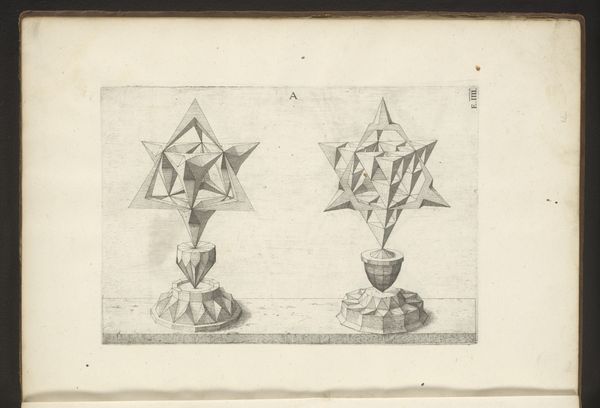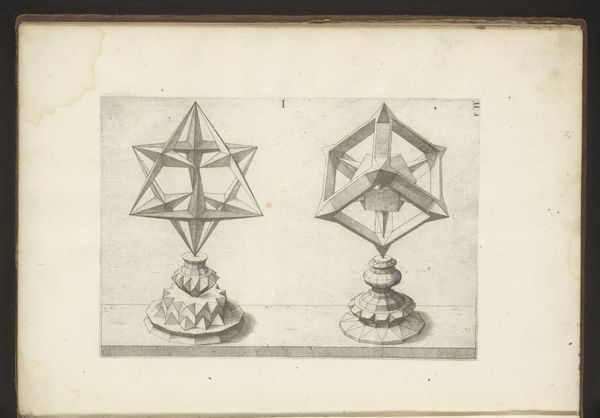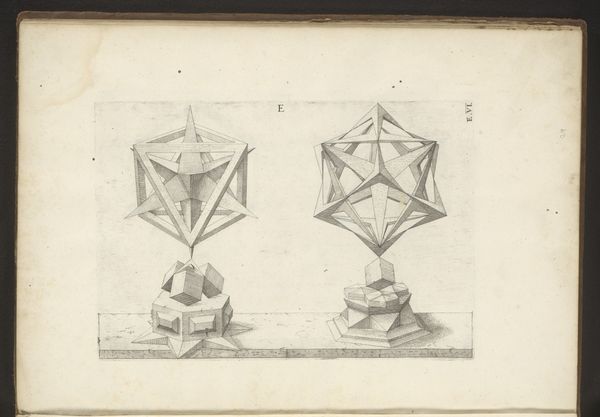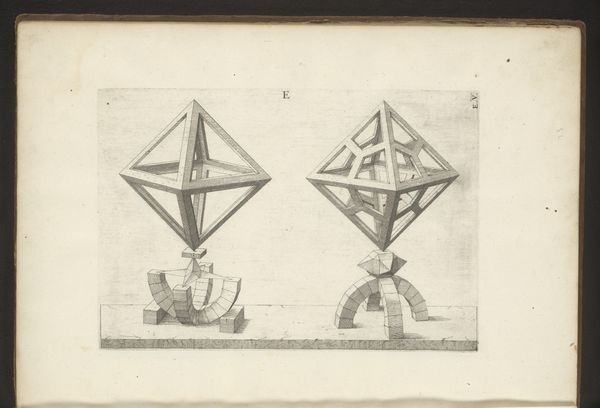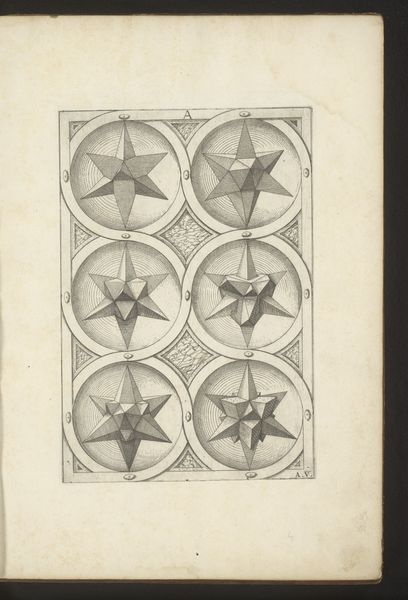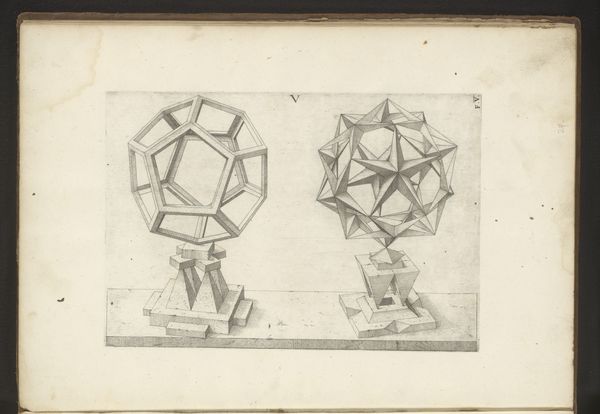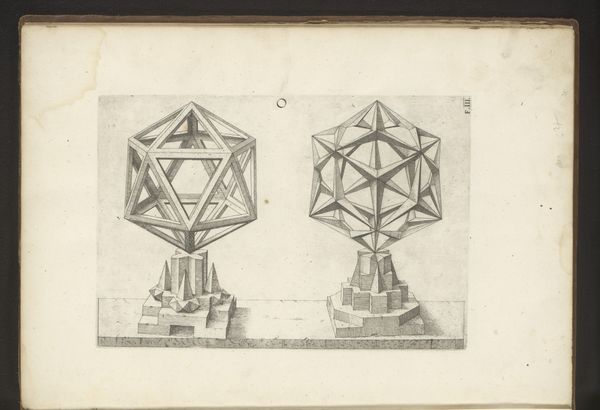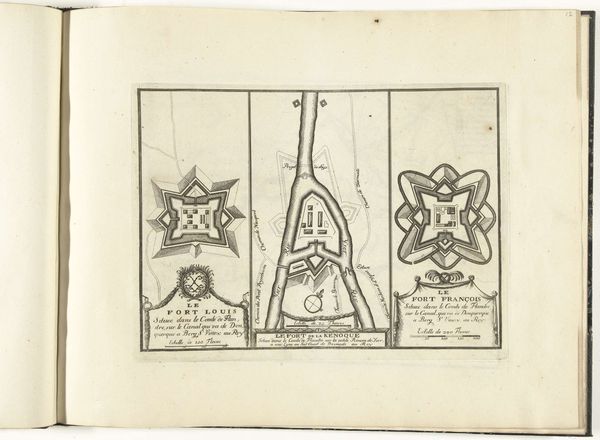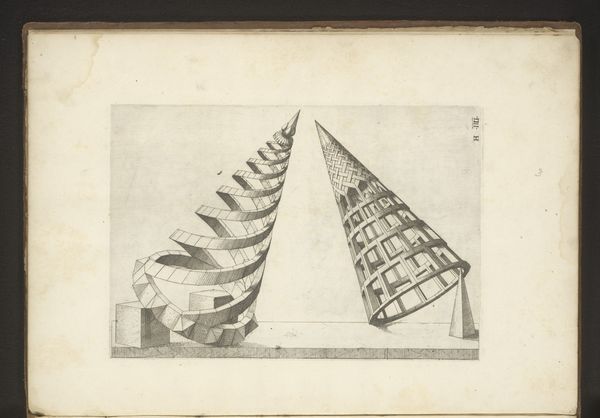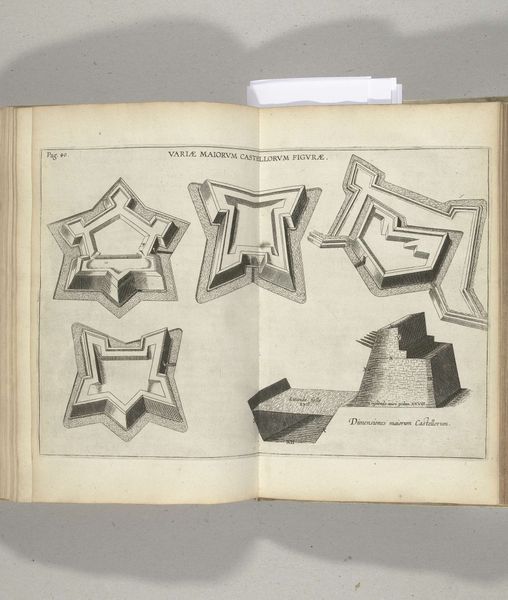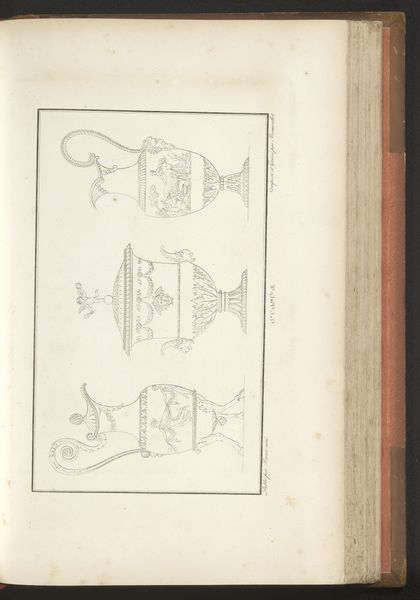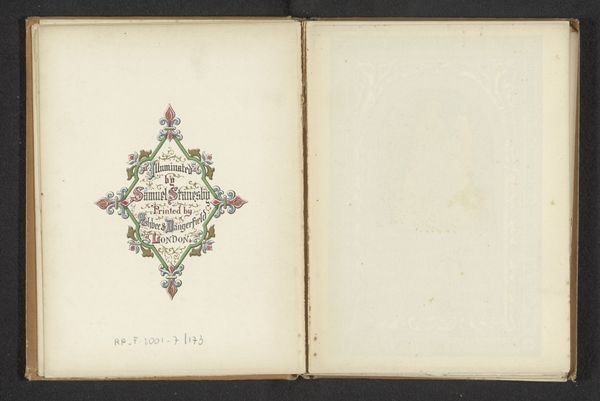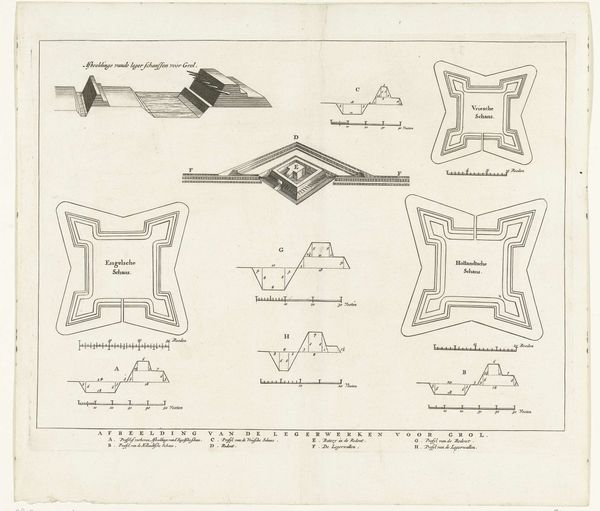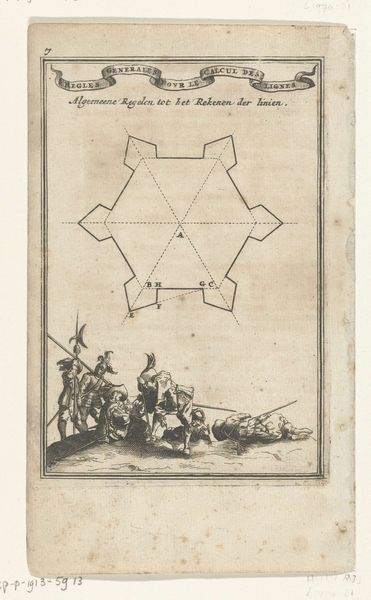
drawing, pen
#
drawing
#
11_renaissance
#
geometric
#
line
#
pen
#
history-painting
Dimensions: height 260 mm, width 177 mm
Copyright: Rijks Museum: Open Domain
"Twee veelvlakken met een tetraëder als uitgangspunt", or "Two polyhedra based on a tetrahedron", was made by Jost Amman sometime between 1575 and 1591, and comes to us from a time of great shifts in scientific and artistic thought. Look closely at these geometric forms. What do they evoke in you? Amman created these polyhedra during the late Renaissance, a time when artists and scientists were increasingly interested in mathematics and its relationship to the natural world. This was a period of intense exploration of perspective, proportion, and the underlying structures that govern our universe. These shapes, with their precise lines and symmetrical forms, reflect a broader cultural fascination with order and harmony. The polyhedra aren't just abstract forms; they represent an attempt to understand and map the world around us. They invite us to consider how we impose order on chaos, and how mathematical principles shape our perceptions of beauty. Consider how these abstract shapes might symbolize our longing for understanding in a complex world.
Comments
No comments
Be the first to comment and join the conversation on the ultimate creative platform.
